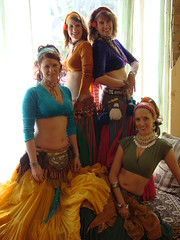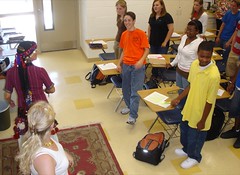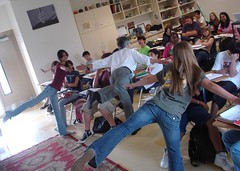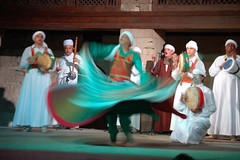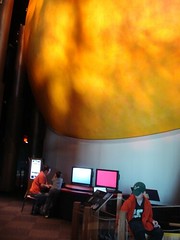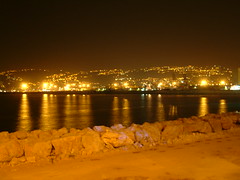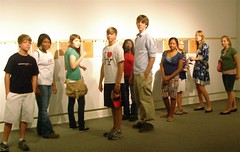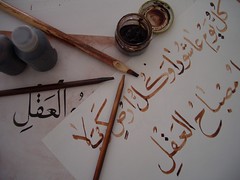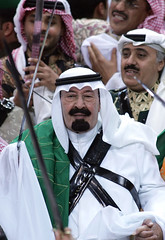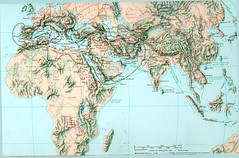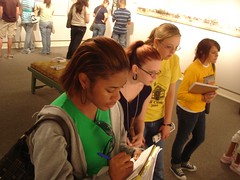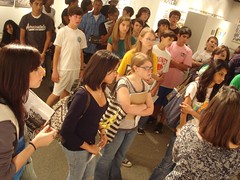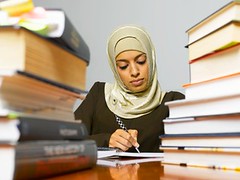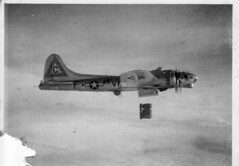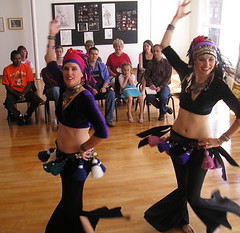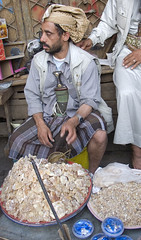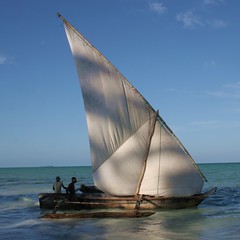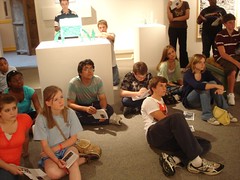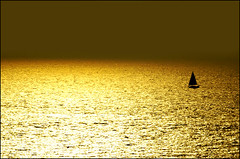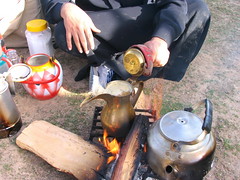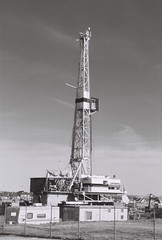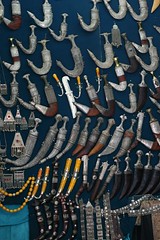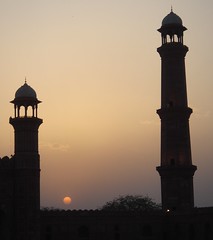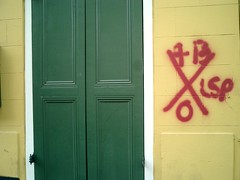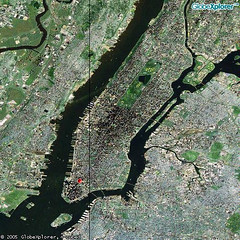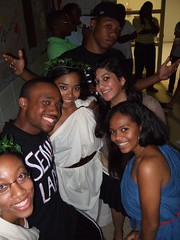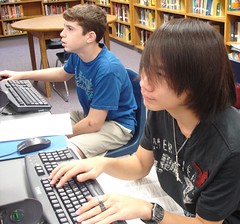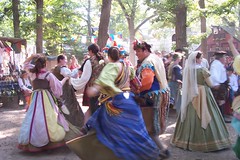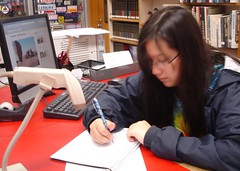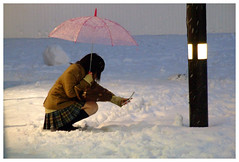In Middle Eastern studies we transition from Islamic studies to an investigation of Judaism.
Mon.
National Geographic's program, Inside Mecca.
Review for test Tuesday.
Essay / thank you notes for Mrs. Kathy Fontaine (and Jordan Mitchell).
Tues.
Open notes test on Islam. Also, the Islamic Empire and notes on belly dance.
Wed.
Intro to Judaism.
Dome of the Rock Mosque, Jerusalem.
Thurs.
Map quiz: the Islamic Empire.
From the Arabian peninsula and neighbors, including Persia and Asia Minor (Turkey) to the Mediterranean coast, including Egypt, Morocco and Spain.
Fri.
The Wailing Wall (Western wall of the temple), Jerusalem.
Sunday, September 30, 2007
Friday, September 28, 2007
Red River Revel, Sun at 1:30 pm, Port Belly Project, Shreveport / photo Sonya Bratlie
See the Revel's extensive schedule of music and art at redriverrevel.com.
Hope you will attend.
Hope you will attend.
Kathy Fontaine, Jordan Mitchell teach belly dance
Belly dance is a Western name for an Arabic style of dance
developed in the Middle East. In Europe, it is sometimes called oriental dance. Similarly, In Turkish it is referred to as oryantal dansı ("Dance of the East"). Some American devotees refer to it simply as "Middle Eastern Dance".
In the Arabic language it is known as raqs sharqi. The term belly-dance is a creation of Orientalism, and is first attested in English in 1899, translating French danse du ventre, says Wikipedia.org.
It is one of the oldest social dances in world history, native to North Africa, Asia and the Middle East. Much of the support for this theory stems from the similarities between poses in Egyptian artwork and the modern dance.
In Palestine and Iraq, this social dance is called Raks Baladi, and is performed by people of all ages and both sexes during festive occasions, such as weddings, and other social gatherings for fun and celebration. It is the theatricalized version, performed by both male and female professional dancers and called Raks Sharki in Arabic, that is most popular in America today.
In its native lands boys and girls learn the dance from an early age. As with many social dances, it is learned informally through observation and imitation of their elders during family and community celebrations, as well as during informal gatherings with friends. Today, these ancient dances are taught in classes offered throughout the world, and skilled dancers are able to share their knowledge that has been passed down from the indigenous peoples who created them.
Many dancers subscribe to one or another of a number of theories regarding the origins of the form. Some of these theories are that the dance form:
* descended from Greece, spreading with Alexander the Great
* descended from indigenous dances of ancient Upper Egypt
* descended from a religious dance Temple Priestesses once practiced
* had been a part of traditional birthing practices in the region(s) of origin
* had spread from the migrations of the Romani people (also called 'Gypsies') and related groups, with origins in India.
Whatever the origin point, dance has a long history in African and the Middle East. Despite the restrictions in Islam regarding portraying humans in paintings, there are several depictions of dancers throughout the Pre-Islamic and Islamic world. Books such as The Art and Architecture of Islam 650-1250 show images of dancers on palace walls, as do Persian miniature paintings from the 12th and 13th centuries.
Outside of the Middle East, raqs sharqi dancing was popularized during the Romantic movement in the 18th and 19th centuries as Orientalist artists depicted their interpretations of harem life in the Ottoman Empire.
Egyptian belly dance was among the first styles to be witnessed by Westerners. During Napoleon's invasion of Egypt (the campaign which yielded the Rosetta stone, leading to the translation of Egyptian hieroglyphics), Napoleon's troops encountered the Ghawazee tribe. The Ghawazee made their living as professional entertainers and musicians. At first the French were repelled by their heavy jewelry and hair, and found their dancing "barbaric", but were soon lured by the hypnotic nature of their movements.
Thursday, September 27, 2007
Test on Tues, Oct 2, on notes from Mondotrudeau
Open notes test: a time to have a print-out of notes relating to Islam or SW Asia. Perhaps a more challenging test of information management and reading comprehension than others.
Hojas de Toledo and Damascus
Two cities well reknowned for fine swords: Toledo, Spain, and Damascus, Syria. Is there a connection between these skilled men and their manufacture of mighty blades?
A Muslim minority sect: the Suifi Dervish
Reading more about the dervishes - whirling dervishes - is a worthy pursuit.
The melody is played upon a primitive violin-like stringed instrument played with a bow called a rebab.
It is little more than a stick for a neck, a single strand of wire as a string, a can for a sound box and a stick and rope as a bow. Cheap but potent.
The melody is played upon a primitive violin-like stringed instrument played with a bow called a rebab.
It is little more than a stick for a neck, a single strand of wire as a string, a can for a sound box and a stick and rope as a bow. Cheap but potent.
Arabic instruments: the tambourine, rebec, doumbek, and oud
The Egyptians play the tambourine faster and in more varied ways than I've ever heard in the US. They also make tambourines in many more sizes - large and small - than we know.
The doumbek is a goblet-shaped drum typical of the Mid East.
The doumbek is a goblet-shaped drum typical of the Mid East.
Desert Oasis: an aquifer lies beneath
An aquifer is an underground layer of water-bearing permeable rock or unconsolidated materials (gravel, sand, silt, or clay) from which groundwater can be usefully extracted using a water well. The study of water flow in aquifers and the characterization of aquifers is called hydrogeology, says wikipedia.
Aquifers can occur at various depths.
Those closer to the surface are more likely to be exploited for water supply and irrigation; they are also more likely to be topped up by the local rainfall.
Many desert areas have limestone hills or mountains within them or close to them which can be exploited as groundwater resources. Parts of the Atlas Mountains in North Africa, the Lebanon and Anti-Lebanon ranges of Syria, Israel and Lebanon, the Djebel Akhdar in Oman, parts of the Sierra Nevada and neighbouring ranges in the United State's South West, have shallow aquifers which are exploited for their water.
Over exploitation can lead to the exceeding of the practical sustained yield, i.e. more water is taken out than can be replenished. Along the coastlines of certain countries, such as Libya and Israel, population growth has led to over-population which has caused the lowering of water table and the subsequent contamination of the groundwater with saltwater from the sea (saline intrusions).
Aquifers can occur at various depths.
Those closer to the surface are more likely to be exploited for water supply and irrigation; they are also more likely to be topped up by the local rainfall.
Many desert areas have limestone hills or mountains within them or close to them which can be exploited as groundwater resources. Parts of the Atlas Mountains in North Africa, the Lebanon and Anti-Lebanon ranges of Syria, Israel and Lebanon, the Djebel Akhdar in Oman, parts of the Sierra Nevada and neighbouring ranges in the United State's South West, have shallow aquifers which are exploited for their water.
Over exploitation can lead to the exceeding of the practical sustained yield, i.e. more water is taken out than can be replenished. Along the coastlines of certain countries, such as Libya and Israel, population growth has led to over-population which has caused the lowering of water table and the subsequent contamination of the groundwater with saltwater from the sea (saline intrusions).
Wednesday, September 26, 2007
Galactic gallivant: end your Revel visit with a SciPort Star Party on Sat, Sept 29
Galactic Discovery: A Revel Star Party
Revelers: Get starry-eyed at Sci-Port the first night of the Revel.
Bring in a hole-punched Revel ticket and enjoy the festivities for just $3.
Saturday, September 29
8:30-10:30 p.m.
In September, the constellation Andromeda rises. Within it is our closest galactic neighbor, the Andromeda Galaxy!
Activities include:
* Telescopes on the Roof
* Make-&-Take Milky Way Model
* Galaxy Face Painting
* Planispheres
* Eye on the Sky - Discovering the Hubble Space Telescope (SPACE DOME Live Presentation)
* Wonders of the Universe (SPACE DOME Movie)
Star Party fee:
$3 per person with hole-punched Revel ticket or with Sci-Port membership
$5 per person regular admission
Doors open at 8:15 p.m.
You may want to arrive early to find parking.
The event will proceed even if there is bad weather.
Revelers: Get starry-eyed at Sci-Port the first night of the Revel.
Bring in a hole-punched Revel ticket and enjoy the festivities for just $3.
Saturday, September 29
8:30-10:30 p.m.
In September, the constellation Andromeda rises. Within it is our closest galactic neighbor, the Andromeda Galaxy!
Activities include:
* Telescopes on the Roof
* Make-&-Take Milky Way Model
* Galaxy Face Painting
* Planispheres
* Eye on the Sky - Discovering the Hubble Space Telescope (SPACE DOME Live Presentation)
* Wonders of the Universe (SPACE DOME Movie)
Star Party fee:
$3 per person with hole-punched Revel ticket or with Sci-Port membership
$5 per person regular admission
Doors open at 8:15 p.m.
You may want to arrive early to find parking.
The event will proceed even if there is bad weather.
Beirut and notes on Islam
Notes on Islam . . .
Prayer five times a day. Before dawn: “prayer is better than sleep...” also at noon, afternoon, evening and nighttime.
Mosque: center of worship as well as a community center (fellowship, food, lessons, etc).
m
Minarets: towers from which emanates the call to prayer.
Friday: day of special devotion & sermons.
In the mosque: courtyard & fountain
- ablutions: ritual washing of hands & feet
- no shoes
- lamps & rugs & pulpit
- screen to separate women’s area / modesty
Koran / Qu’ran
Islam: submission to the will of God.
Muslim: one who submits.
Qu’ran: suicide forbidden.
Infidel! one who does not believe in God.
Jihad: holy war of conquest (see Crusades). Created an Islamic Empire.
Byzantium/Constantinople/Istanbul: ancient city on the Black Sea which has been Roman, Christian and, today, Muslim.
bene “good” (Latin)
dicte “speaking”
benediction - a blessing.
Petra, Jordan: elaborate buildings carved into rock cliff.
petr oleum: “rock” “oil”
*******
Independent work . . .
Research and compare (both sims & difs)
a) falconry and camel racing.
b) the nations of Yemen and Saudi Arabia.
c) the Arabian horse and the Mustang.
d) yogurt and the date - of the date palm.
e) Ibn Battuta and Ibn Saud.
f) Compose a skit (group project) that will bring to life the biographies and teaching of Abraham, Muhammad and Jesus of Nazareth. You may be lighthearted but not blasphemous.
1. City known as a French-influenced and liberal tourist center on the Mediterranean:
a) Cairo b) Beirut c) Jerusalem d) Damascus
2. Giza is a small Egyptian municipality with an enormous and ancient tourist attraction. Giza is near a) Cairo b) Alexandria c) Jerusalem d) Beirut.
3. Minarets are towers that are built alongside a mosque. From the minaret Muslims are called to a) Jihad b) prayer c) Islam d) muezzin.
4. Terrorists of 9/11/01 were mostly from Egypt and mostly well-educated family men. T / F
5. Location of the World Trade Center: a) Lower Manhattan b) Upper Brooklyn c) Lower Queens d) Upper Bronx.
6. The dr’bkke or doumbek is a Middle eastern instrument of this type: a) drum b) tambourine c) fiddle d) lute.
7. Saudi Arabia, principally a vast desert, has no major bodies of water and one range of Eastern mountains. T / F
8. Based on terrain, name the nation that will have the most rainfall: a) Yemen b) Oman c) UAE d) Kuwait.
Tuesday, September 25, 2007
Threats and decisions
Not to speak for everyone, but in general the faculty and security at cmhs believe the threat about 9-25 was overblown. We have probably been overly cautious. I personally believe that what seemed to be a threatening message was actually about the release of the Halo 3 software game.
I also believe that Magnet is a safe campus in general because we care a great deal and are on high alert. Today there will be considerable extra security on campus.
To go to school or not? Each parent must make that decision based on their own sense of their child's safety. I think intelligent vigilance is the key to our future in this threatening era.
I also believe that Magnet is a safe campus in general because we care a great deal and are on high alert. Today there will be considerable extra security on campus.
To go to school or not? Each parent must make that decision based on their own sense of their child's safety. I think intelligent vigilance is the key to our future in this threatening era.
Monday, September 24, 2007
Al-Jabr, "Restoration"
Al-Khwarizmi, the man who invented Arabic numerals (consolidated the Hindu and Greek) -- and algebra.
Arabic numerals are considered an important milestone in the development of mathematics.These numeral glyphs ultimately a pure arabic invention , both western and eastern styles.
The symbols for 0 to 9 in the Arabic numerals (system) evolved from the concept of angles. Where 0 has no anglesand 9 having 9 angles a by product of the inginouity/creativity that the arab mathematians have been known for.
The numeral system came to be known to both the Persian mathematician Al-Khwarizmi, whose book On the Calculation with Hindu Numerals written about 825, and the Arab mathematician Al-Kindi, who wrote four volumes, "On the Use of the Indian Numerals" (Ketab fi Isti'mal al-'Adad al-Hindi) about 830, are principally responsible for the diffusion of the Indian system of numeration in the Middle-East and the West [1].
In the 10th century, Middle-Eastern mathematicians extended the decimal numeral system to include fractions, as recorded in a treatise by Syrian mathematician Abu'l-Hasan al-Uqlidisi in 952-953.
Arabic numerals are considered an important milestone in the development of mathematics.These numeral glyphs ultimately a pure arabic invention , both western and eastern styles.
The symbols for 0 to 9 in the Arabic numerals (system) evolved from the concept of angles. Where 0 has no anglesand 9 having 9 angles a by product of the inginouity/creativity that the arab mathematians have been known for.
The numeral system came to be known to both the Persian mathematician Al-Khwarizmi, whose book On the Calculation with Hindu Numerals written about 825, and the Arab mathematician Al-Kindi, who wrote four volumes, "On the Use of the Indian Numerals" (Ketab fi Isti'mal al-'Adad al-Hindi) about 830, are principally responsible for the diffusion of the Indian system of numeration in the Middle-East and the West [1].
In the 10th century, Middle-Eastern mathematicians extended the decimal numeral system to include fractions, as recorded in a treatise by Syrian mathematician Abu'l-Hasan al-Uqlidisi in 952-953.
Calligraphy: Arabic script
After the definitive fixing of the Arabic script around 786, by Khalil ibn Ahmad al Farahidi, many styles were developed, both for the writing down of the Qur'an and other books, and for inscriptions on monuments as decoration.
Arabic calligraphy has not fallen out of use as calligraphy has in the Western world, and is still considered by Arabs as a major art form; calligraphers are held in great esteem. Being cursive by nature, unlike the Latin alphabet, Arabic script is used to write down a verse of the Qur'an, a Hadith, or simply a proverb, in a spectacular composition.
Arabic calligraphy has not fallen out of use as calligraphy has in the Western world, and is still considered by Arabs as a major art form; calligraphers are held in great esteem. Being cursive by nature, unlike the Latin alphabet, Arabic script is used to write down a verse of the Qur'an, a Hadith, or simply a proverb, in a spectacular composition.
Saudi King Abdullah bin Abdul Aziz Al Saud: King of the World's Oil Supply
The Organization of the Petroleum Exporting Countries (OPEC) is an international cartel[1][2] made up of Iraq, Indonesia, Iran, Kuwait, Libya, Angola, Algeria, Nigeria, Qatar, Saudi Arabia, the United Arab Emirates, and Venezuela. The Vienna-based organization has maintained its headquarters there since 1965, hosting regular meetings between the oil ministers of its member states.
The principle aim of the organization, according to its Statute, is the determination of the best means for safeguarding their interests, individually and collectively; devising ways and means of ensuring the stabilization of prices in international oil markets with a view to eliminating harmful and unnecessary fluctuations; giving due regard at all times to the interests of the producing nations and to the necessity of securing a steady income to the producing countries; an efficient, economic and regular supply of petroleum to consuming nations, and a fair return on their capital to those investing in the petroleum industry."[3]
The principle aim of the organization, according to its Statute, is the determination of the best means for safeguarding their interests, individually and collectively; devising ways and means of ensuring the stabilization of prices in international oil markets with a view to eliminating harmful and unnecessary fluctuations; giving due regard at all times to the interests of the producing nations and to the necessity of securing a steady income to the producing countries; an efficient, economic and regular supply of petroleum to consuming nations, and a fair return on their capital to those investing in the petroleum industry."[3]
In Mecca, pilgrim (simple white robe) prays in front of the black stone at the Kaaba in the city's Grand Mosque

Hamas leader Khaled Mashaal, who signed a key political deal in Mecca, prays in front of the black stone at the Kaaba in the city's Grand Mosque
Originally uploaded by johnhanscom
"The Primordial House", or "The Sacred House", is a large cuboidal building located inside the mosque known as al-Masjid al-Haram in Mecca, Saudi Arabia. The mosque was built around the original Kaaba.
The Kaaba is the holiest place in Islam.[1] The qibla, the direction Muslims face during prayer, is the direction from their location on Earth towards the Kaaba. It is around the Kaaba that ritual circumambulation is performed by Muslims during the Hajj (pilgrimage) season as well as during the Umrah (lesser pilgrimage).[1]
A significant feature of the Kaaba is the Black Stone, also called al-Hajar-ul-Aswad, which is believed by some Muslims to date back to the time of Adam and Eve.[6] It is about 30 cm (12 inches) in diameter, is located on the Eastern corner of the Kaaba, and is surrounded by a silver frame. When Muslims come to Mecca to perform the Hajj, one of the tasks which they try to accomplish is to kiss the Black Stone, as Muhammad once kissed it.[7] Because of the large crowds this is not always possible, and so as pilgrims walk around the Kaaba, they are to point to the Black Stone on each circuit.[8]
Tradition has it that when the Black Stone on the corner of the shrine came to earth, it was white. It turned black under the burden of millions of sins.[9]
Kaaba - without the cover
The Kaaba's veil is renewed each year. I don't know what happens to the old shroud but I would like to know.
Sunday, September 23, 2007
Week of Sept 24 - 28; Medieval Times: the extent of the Islamic empire
Objectives, week of Sept 24 - 28.
Students will demonstrate knowledge of the map of SW Asia and the cultural force of Islam.
Mon.
Life of the prophet Muhammad. Beginnings of Islam.
Tues
Islamic Empire and Golden Age.
Wed.
Contemporary impact of Islam. Second hour guest speaker: Dr Marwan Kaskas, Lebanon-born nephrologist (kidney-related illnesses).
Th.
Open notes quiz on web site / class notes on Islam.
Fr.
The role of Belly Dance in Middle Eastern society. Guest speaker Kathy Fontaine (see an earlier post). All classes. Parents welcome.
***********************************************************
Medieval Times: the extent of the Islamic empire
From Spain to Pakistan, the 8th century Muslim soldiers mounted on camels and swift Arabian steeds conquered and administered an empire.
Symbols on the map are the sword-wielding warrior on camel or Arabian horse. The most significant region of their conquest was southern Europe: Espana. Muslim soldiers crossed the Strait of Gibraltar in 711 AD.
Annotated timeline of the Monotheist religions of SW Asia
* Judaism, Christianity, Islam
* Include symbols (menorah, crescent moon & star, cross & orb) and color.
* Brief notes, such as the 5 Pillars of Islam.
* Brief map of the Med - Persian Gulf region.
Indy work:
* Research and compare the planning and execution of the Erie Canal with the advent of Islam and the creation of an Islamic empire.
Students will demonstrate knowledge of the map of SW Asia and the cultural force of Islam.
Mon.
Life of the prophet Muhammad. Beginnings of Islam.
Tues
Islamic Empire and Golden Age.
Wed.
Contemporary impact of Islam. Second hour guest speaker: Dr Marwan Kaskas, Lebanon-born nephrologist (kidney-related illnesses).
Th.
Open notes quiz on web site / class notes on Islam.
Fr.
The role of Belly Dance in Middle Eastern society. Guest speaker Kathy Fontaine (see an earlier post). All classes. Parents welcome.
***********************************************************
Medieval Times: the extent of the Islamic empire
From Spain to Pakistan, the 8th century Muslim soldiers mounted on camels and swift Arabian steeds conquered and administered an empire.
Symbols on the map are the sword-wielding warrior on camel or Arabian horse. The most significant region of their conquest was southern Europe: Espana. Muslim soldiers crossed the Strait of Gibraltar in 711 AD.
Annotated timeline of the Monotheist religions of SW Asia
* Judaism, Christianity, Islam
* Include symbols (menorah, crescent moon & star, cross & orb) and color.
* Brief notes, such as the 5 Pillars of Islam.
* Brief map of the Med - Persian Gulf region.
Indy work:
* Research and compare the planning and execution of the Erie Canal with the advent of Islam and the creation of an Islamic empire.
Saturday, September 22, 2007
Sending independent work and other communications: trudeau@earthlink.net
Please help me organize papers by emailing, whenever possible, your bonus credit work to me at trudeau@earthlink.net.
Avoid using my gmail account so as to help my categorization of materials.
Merci.
Avoid using my gmail account so as to help my categorization of materials.
Merci.
Why a "Boat on a roof"? Essay guidelines in social studies
Boat on a Roof guidelines: students worked on 2 guidelines in essay writing for geography class this week. I call them Boat on a Roof guidelines because such a photo was one of the most dramatic images we viewed at Meadows Museum.
The reason for emphasis on these guidelines is because they will make a you a more forceful writer. The world is very competitive and use of these techniques may give you an edge.
A 2-part title is the mark of a good writer.
a) Snammy title. Brief.
b) Explanatory subtitle. What we call the hard info.
A vivid opening is a classic standard for effective writing.
a) Open with the strongest image, such as a Boat on a Roof.
b) A quote is also effective: "A boat on a roof was among the images viewed by students . . . " Also, a question is not a bad fallback in writing an opening.
Which do you like best?
- Dog bites man in CMHS incident
- Man bites dog in incident at CMHS
The reason for emphasis on these guidelines is because they will make a you a more forceful writer. The world is very competitive and use of these techniques may give you an edge.
A 2-part title is the mark of a good writer.
a) Snammy title. Brief.
b) Explanatory subtitle. What we call the hard info.
A vivid opening is a classic standard for effective writing.
a) Open with the strongest image, such as a Boat on a Roof.
b) A quote is also effective: "A boat on a roof was among the images viewed by students . . . " Also, a question is not a bad fallback in writing an opening.
Which do you like best?
- Dog bites man in CMHS incident
- Man bites dog in incident at CMHS
Friday, September 21, 2007
Hijab: veil which may be chosen by muslim women
Hijab or ħijāb (حجاب) is the Arabic term for "cover" (noun), based on the root حجب meaning "to veil, to cover (verb), to screen, to shelter"
In some Arabic-speaking countries and Western countries, the word hijab primarily refers to women's head and body covering, but in Islamic scholarship, hijab is given the wider meaning of modesty, privacy, and morality.[1] The word used in the Qur'an for a headscarf or veil is khimār (خمار).
In some Arabic-speaking countries and Western countries, the word hijab primarily refers to women's head and body covering, but in Islamic scholarship, hijab is given the wider meaning of modesty, privacy, and morality.[1] The word used in the Qur'an for a headscarf or veil is khimār (خمار).
The Oud is grandfather to the Guitarra
The oldest pictorial record of a lute dates back to the Uruk period in Southern Mesopotamia - over 5000 years ago on a cylinder seal acquired by Dr. Dominique Collon and currently housed at the British Museum.
The image depicts a female crouching with her instruments upon a boat, playing right-handed. This instrument appears many times throughout Mesopotamian history and again in ancient Egypt from the 18th dynasty onwards in long and short-neck varieties.
One may see such examples on clay tablets and papyrus paper. This instrument and its close relatives have been a part of the music of each of the ancient civilizations that have existed in the Mediterranean and the Middle East regions, including the Sumerians, Akkadians, Persians, Babylonians
The image depicts a female crouching with her instruments upon a boat, playing right-handed. This instrument appears many times throughout Mesopotamian history and again in ancient Egypt from the 18th dynasty onwards in long and short-neck varieties.
One may see such examples on clay tablets and papyrus paper. This instrument and its close relatives have been a part of the music of each of the ancient civilizations that have existed in the Mediterranean and the Middle East regions, including the Sumerians, Akkadians, Persians, Babylonians
Thursday, September 20, 2007
Schedule for PBS airing of documentary on WWII: The War
The War: A Necessary War
On-Air & Online | Sunday, September 23, 2007, 7:00 - 9:30 PM
A new seven-part documentary series directed and produced by Ken Burns and Lynn Novick, explores the history and horror of the Second World War from an American perspective by following the fortunes of so-called ordinary men and women who become caught up in one of the greatest cataclysms in human history.
Log on to the companion Web site to hear an interview with Ken Burns and download the viewer's guide.
http://www.pbs.org/thewar/
The War: When Things Get Tough
On-Air & Online | Mon, Sept 24, 7:00 - 9:00 PM
By January 1943, Americans have been at war for more than a year. Across the country, in cities such as Mobile, Alabama, and Waterbury, Connecticut, nearly all manufacturing is converted to the war effort.
The War: A Deadly Calling
Tuesday, Sept 25, 7:00 - 9:00 PM
Despite American victories in the Solomons and New Guinea, the Japanese empire still stretches 4,000 miles. African Americans, serving in the segregated armed forces, demand equal rights; the military reluctantly agrees to some changes. Meanwhile, the greatest test for the Allies -- the long-delayed invasion of France -- is now just days away.
The War: Pride of Our Nation
Wed, Sept 26, 7:00 - 9:30 PM
By June 1944, there are signs on both sides of the world that the tide of the war is turning. On June 6, 1944 -- D-Day -- a million-and-a-half Allied troops embark on the invasion of France. In the Pacific, the enemy seems increasingly determined to defend to the death every piece of territory they hold. On August 25, after four years of Nazi occupation, Paris is liberated. (CC, Stereo, 1 year)
On-Air & Online | Sunday, September 23, 2007, 7:00 - 9:30 PM
A new seven-part documentary series directed and produced by Ken Burns and Lynn Novick, explores the history and horror of the Second World War from an American perspective by following the fortunes of so-called ordinary men and women who become caught up in one of the greatest cataclysms in human history.
Log on to the companion Web site to hear an interview with Ken Burns and download the viewer's guide.
http://www.pbs.org/thewar/
The War: When Things Get Tough
On-Air & Online | Mon, Sept 24, 7:00 - 9:00 PM
By January 1943, Americans have been at war for more than a year. Across the country, in cities such as Mobile, Alabama, and Waterbury, Connecticut, nearly all manufacturing is converted to the war effort.
The War: A Deadly Calling
Tuesday, Sept 25, 7:00 - 9:00 PM
Despite American victories in the Solomons and New Guinea, the Japanese empire still stretches 4,000 miles. African Americans, serving in the segregated armed forces, demand equal rights; the military reluctantly agrees to some changes. Meanwhile, the greatest test for the Allies -- the long-delayed invasion of France -- is now just days away.
The War: Pride of Our Nation
Wed, Sept 26, 7:00 - 9:30 PM
By June 1944, there are signs on both sides of the world that the tide of the war is turning. On June 6, 1944 -- D-Day -- a million-and-a-half Allied troops embark on the invasion of France. In the Pacific, the enemy seems increasingly determined to defend to the death every piece of territory they hold. On August 25, after four years of Nazi occupation, Paris is liberated. (CC, Stereo, 1 year)
Dia De Los Muertos exhibit at Artspace, 710 Texas St, good for bonus credit
Artspace (635-6535) has an amazing exhibit of Mexican culture this month called Dia de los Muertos. You may visit this exhibit and write about it for independent work.
Excepting Mondays, Artspace is open 10 - 6 pm. Seea list of special Dia events here.
Excepting Mondays, Artspace is open 10 - 6 pm. Seea list of special Dia events here.
Bellydancer and stockbroker Kathy Fontaine to visit geography classes Fri, Sept 28
Kathy Fontaine, co-founder of Port Belly Project and founder of Lotus Center, is a businesswoman and belly dancer. She will teach geography students about the hisotry of belledi as well as demonstrate several styles of dance. Parents are welcome to attend one of the classes on Fri, Sept 28.
Fontaine will also instruct us in basic Middle Eastern percussion. You may bring a tambourine or small drum to class that day.
Fontaine will also instruct us in basic Middle Eastern percussion. You may bring a tambourine or small drum to class that day.
Frankincense and other aromatic resins of SW ASia
Frankincense is tapped from the very scraggly but hardy Boswellia tree through slashing the bark and allowing the exuded resins to bleed out and harden. These hardened resins are called tears, says Wikipedia.
These trees are considered unusual for their ability to grow in environments so unforgiving that the trees sometimes grow directly out of solid stone, which the tree attaches to by means of a sucker-like appendage.
Frankincense is used in perfumery and aromatherapy. Olibanum essential oil is obtained by steam distillation of the dry resin. The smell of the olibanum smoke is due to the products of pyrolysis.
Frankincense was lavishly used in religious rites. In the Bible's Old Testament, it was part of the temple rites; according to the Gospel of Matthew 2:11, gold, frankincense and myrrh were among the gifts to Jesus by the Biblical Magi "from out of the east".
The Egyptians ground the charred resin into a powder called kohl. Kohl was used to make the distinctive black eyeliner seen on so many figures in Egyptian art.
The aroma of frankincense is said to represent life and the Judaic, Christian and Islamic faiths have often used frankincense mixed with oils to anoint newborn infants and individuals considered to be moving into a new phase in their spiritual lives.
These trees are considered unusual for their ability to grow in environments so unforgiving that the trees sometimes grow directly out of solid stone, which the tree attaches to by means of a sucker-like appendage.
Frankincense is used in perfumery and aromatherapy. Olibanum essential oil is obtained by steam distillation of the dry resin. The smell of the olibanum smoke is due to the products of pyrolysis.
Frankincense was lavishly used in religious rites. In the Bible's Old Testament, it was part of the temple rites; according to the Gospel of Matthew 2:11, gold, frankincense and myrrh were among the gifts to Jesus by the Biblical Magi "from out of the east".
The Egyptians ground the charred resin into a powder called kohl. Kohl was used to make the distinctive black eyeliner seen on so many figures in Egyptian art.
The aroma of frankincense is said to represent life and the Judaic, Christian and Islamic faiths have often used frankincense mixed with oils to anoint newborn infants and individuals considered to be moving into a new phase in their spiritual lives.
Shadow of a Dhow
A dhow is a traditional Arab sailing vessel with one or more lateen sails, says Wikipedia. It is primarily used along the coasts of the Arabian Peninsula, India, and East Africa. A larger dhow may have a crew of approximately thirty while smaller dhows have crews typically ranging around twelve.
Up to the 1960s, dhows made commercial journeys between the Persian Gulf and East Africa using only sails as a means of propulsion. The freight was mostly dates and fish to East Africa and mangrove timber to the lands in the Persian Gulf. They sailed south with the monsoon in winter or early spring and back again to Arabia in late spring or early summer.
Up to the 1960s, dhows made commercial journeys between the Persian Gulf and East Africa using only sails as a means of propulsion. The freight was mostly dates and fish to East Africa and mangrove timber to the lands in the Persian Gulf. They sailed south with the monsoon in winter or early spring and back again to Arabia in late spring or early summer.
The nexus of trade and cultural movement between 3 cultures: the Arabian Sea

map of india and neighbouring countries / carte de l'Indie et des pays voisins
Originally uploaded by tenbon
- Trade winds along the coastline promoted trading voyages.
- Sailors traveled from India to the coast of East Africa.
- East Africans, Arabians, Persians and Indians were linked by trade.
- India supplied jewels and spices.
- The Persians supplied fine goods such as Persian carpets.
- The Arabians offered fine incense (think of the 3 Wise Men's gifts) and dates.
- East Africans had ivory, gold, diamonds.
- Slavery was commonplace.
- Mohandas Gandhi, famous for managing the expulsion of the British from India by non-violent protest (it took 50 years of his life), was raised in the cosmopolitan world of an Arabian Sea port, the city of Porbandor. His skills of diplomacy and understanding were, he said, developed in a community where there was cooperation between Hindus, Muslims, Christians and people of tribal religions.
- The Arab dhow was one of the principal conveyances.
Wednesday, September 19, 2007
The influence of Arabic words in English
From wikipedia:
In common with other European languages, many English words are derived from Arabic, often through other European languages, especially Spanish and Italian. Among them are commonly-used words like
"sugar" (sukkar),
"cotton" (quṭn) and
"magazine" (maḫāzin). English words more recognizably of Arabic origin include
"algebra",
"alcohol",
"alchemy",
"almanac,"
"alkali" and
"zenith."
Some words in common use, such as "intention" and "information", were originally calques of Arabic philosophical terms.
"Al" means "the."
In common with other European languages, many English words are derived from Arabic, often through other European languages, especially Spanish and Italian. Among them are commonly-used words like
"sugar" (sukkar),
"cotton" (quṭn) and
"magazine" (maḫāzin). English words more recognizably of Arabic origin include
"algebra",
"alcohol",
"alchemy",
"almanac,"
"alkali" and
"zenith."
Some words in common use, such as "intention" and "information", were originally calques of Arabic philosophical terms.
"Al" means "the."
Tuesday, September 18, 2007
Essay of description on Meadows Museum of Art, Shreveport
Titling:
a) Snaffy title (like "City of Hope")
b) Explanatory subtitle (Like "photos of post-Katrian destruction in New Orleans").
Opening:
use one of these techniques -
a) Description ("A boat on as roof of a house in New Orleans . . . )
b) Quote ("You'll see that the flood waters enabled this barge to land atop this school bus during the Katrina flood," said Meadows Museum education director Leia Lewis.)
c) Question: (How did this photographer get a snap of a ski-boat on the roof of a New Orleans house? )
Exhibits at Meadows Museum of Art during the field trip:
a) City of Hope photos
b) John T Scott sculpture and block prints
c) Contemporary portraits by Meg Harders and Reem Bassous.
d) Historic portaits of SE Asia by Jean Despujols.
e) Art by Louisiana artists such as Clyde Connell.
a) Snaffy title (like "City of Hope")
b) Explanatory subtitle (Like "photos of post-Katrian destruction in New Orleans").
Opening:
use one of these techniques -
a) Description ("A boat on as roof of a house in New Orleans . . . )
b) Quote ("You'll see that the flood waters enabled this barge to land atop this school bus during the Katrina flood," said Meadows Museum education director Leia Lewis.)
c) Question: (How did this photographer get a snap of a ski-boat on the roof of a New Orleans house? )
Exhibits at Meadows Museum of Art during the field trip:
a) City of Hope photos
b) John T Scott sculpture and block prints
c) Contemporary portraits by Meg Harders and Reem Bassous.
d) Historic portaits of SE Asia by Jean Despujols.
e) Art by Louisiana artists such as Clyde Connell.
Sailors call it the Med
The term Mediterranean derives from the Latin mediterraneus, "inland" (medius, "middle" + terra, "land, earth"). To the ancient Romans, the Mediterranean was the center of the earth as they knew it.
The Mediterranean Sea has been known by a number of alternative names throughout human history.
Mare Nostrum (Latin, "Our Sea") by the Romans (Sallust, Jug. 17). Greeks name it Mesogeios (Μεσόγειος), meaning "inland, interior" (μεσο, "middle" + γαιος, "land, earth").
In the Old Testament, on the west coast of the Holy Land, and therefore behind a person facing the east, it is called the "Hinder Sea", sometimes translated as "Western Sea", (Deut. 11:24; Joel 2:20), and also the "Sea of the Philistines" (Exod. 22:81), because that people occupied a large portion of its shores near the Israelites.
Mostly, however, it was the "Great Sea" , or simply "The Sea". In Hebrew, it is called HaYam HaTikhon (הַיָּם הַתִּיכוֹן), "the middle sea", a literal adaptation of the German equivalent Mittelmeer.
The Mediterranean Sea has been known by a number of alternative names throughout human history.
Mare Nostrum (Latin, "Our Sea") by the Romans (Sallust, Jug. 17). Greeks name it Mesogeios (Μεσόγειος), meaning "inland, interior" (μεσο, "middle" + γαιος, "land, earth").
In the Old Testament, on the west coast of the Holy Land, and therefore behind a person facing the east, it is called the "Hinder Sea", sometimes translated as "Western Sea", (Deut. 11:24; Joel 2:20), and also the "Sea of the Philistines" (Exod. 22:81), because that people occupied a large portion of its shores near the Israelites.
Mostly, however, it was the "Great Sea" , or simply "The Sea". In Hebrew, it is called HaYam HaTikhon (הַיָּם הַתִּיכוֹן), "the middle sea", a literal adaptation of the German equivalent Mittelmeer.
Dusk in the Persian Gulf; time for 20 questions
Practice quiz -
1. Tiny nation at the head of the Persian Gulf.
2. Island nation of the Persian Gulf.
3. Peninsular nation in the Persian Gulf.
4. Nation on the Arabian side of the Strait of Hormuz.
5. Nation on the Persian side of the Strait of Hormuz.
6. Largest peninsula in SW Asia.
7. Sea that lies between Arabia and India.
8. Gulf nation that is a composite of several kingdoms.
9. Arabian nation at the mouth of the Red Sea, at the Bab al Mandeb.
10. Sea that separates Africa from Arabia.
11. Nation that lies at the head of the Red Sea.
12. Sea that is north of the Red Sea.
13. The only consecutively doubled letter in the name Mediterranean.
14. The nature of my epigram, "Israel is not real."
15. Nation surrounded by Syria and Israel.
16. In Biblical times the men of the Tigris and Euphrates valley might have sailed to India. T / F
For an answer, ask the late explorer Thor Heyerdahl.
17. Saudi Arabia, Qatar and Oman can be properly called tropical nations. T / F
18. Which is far more mountainous, Iraq or Iran?
19. T / F Roger Federer, one of the world's great tennis players and a Swiss citizen, spends much of his life in Dubai (Dubayy), the UAE.
20. The term Persian Gulf is an ethnocentric term. T / F
1. Tiny nation at the head of the Persian Gulf.
2. Island nation of the Persian Gulf.
3. Peninsular nation in the Persian Gulf.
4. Nation on the Arabian side of the Strait of Hormuz.
5. Nation on the Persian side of the Strait of Hormuz.
6. Largest peninsula in SW Asia.
7. Sea that lies between Arabia and India.
8. Gulf nation that is a composite of several kingdoms.
9. Arabian nation at the mouth of the Red Sea, at the Bab al Mandeb.
10. Sea that separates Africa from Arabia.
11. Nation that lies at the head of the Red Sea.
12. Sea that is north of the Red Sea.
13. The only consecutively doubled letter in the name Mediterranean.
14. The nature of my epigram, "Israel is not real."
15. Nation surrounded by Syria and Israel.
16. In Biblical times the men of the Tigris and Euphrates valley might have sailed to India. T / F
For an answer, ask the late explorer Thor Heyerdahl.
17. Saudi Arabia, Qatar and Oman can be properly called tropical nations. T / F
18. Which is far more mountainous, Iraq or Iran?
19. T / F Roger Federer, one of the world's great tennis players and a Swiss citizen, spends much of his life in Dubai (Dubayy), the UAE.
20. The term Persian Gulf is an ethnocentric term. T / F
Monday, September 17, 2007
Independent work: compare Arabic coffee to the Persian rug
Turkish coffee is basically the same as Arabic coffee. It is a signature drink and originates in this part of the world. The Arabian or Middle eastern rug, aka the Persian rug, is also a product that originates here. .
Research - include your sources - and compare the 2 topics.
Research - include your sources - and compare the 2 topics.
Cuisine at the Eastern end of the Mediterranean: Kibbe, tabouli, hummus, pita bread
Kibbe, ground lamb with ground onion and bulgar wheat, may be baked or eaten raw.
Tabouli isi a cold salad made from ground wheat, onion, tomatoes, mint, olive oil and spices.
Hummus is a thick sauce, or dip, that is made from ground chick peas (aka garbanzo beans) and olive oil. It is usually eaten with the flat pocket bread, or pita.
Tabouli isi a cold salad made from ground wheat, onion, tomatoes, mint, olive oil and spices.
Hummus is a thick sauce, or dip, that is made from ground chick peas (aka garbanzo beans) and olive oil. It is usually eaten with the flat pocket bread, or pita.
If you want to drill for oil or water, first build a derrick; why?
The tower called a derrick supports the heavy lengths of pipe that are part of the drilling mechanism. The pipe joints must be raised to a vertical position to be attached to the drill bit and rotated into the ground.
More from the textbook in the classroom.
More from the textbook in the classroom.
Dromedary vs. Bactrian
Dromedary and Bactrian are the two types of camels, right?
Which is which?
Name the regions of their habitat.
Which one produces material used in coats? Which one's hide is used in sandal-making?
Which is which?
Name the regions of their habitat.
Which one produces material used in coats? Which one's hide is used in sandal-making?
Historic Arabia: the Yemeni dagger called a jambiya
Jambiya (Arabic script جمبية or جنبية) is the Arabic term for dagger, but it is generally used to describe a specific type of dagger with a short curved blade that is worn on a belt. Although the jambiya is of Arab origin, it is mostly associated with people of Yemeni descent. Men typically above the age of 14 wear it as an accessory to their clothing. It is said that a Yemeni man is incomplete without his jambiya, says Wikipedia.
See more here.
See more here.
Sunday, September 16, 2007
Salaam: Week of Sept 17 - 21
"Salaam aleikum!" is the Arabic greeting heard throughout the Muslim lands. It means "Peace be with you." Your response is "Aleikum salaam," or, "And peace be with you."
Review of Ramadan and the 5 Pillars of Islam.
Mon.
Guidance on the reading comprehension issues and answers to quizzes 2 and 3.
Map of SW Asia. We will practice sketching the map 3 days and have a quiz on Thursday.
1. Saudi Arabia
2. Yemen
3. Red Sea
4. Egypt
5. Mediterranean
6. Oman
7. Persian Gulf
8. Arabian Sea
9. Iran
10. Iraq
11. Kuwait
12. Bahrain
13. Qatar
14. Mecca
15. Cairo
Tues.
Review of Meadows Museum of Art field trip. Btw, student behavior in the museum was excellent.
Additional background on the museum, especially the odyssey of painter Jean Despujols.
Essay of description - Meadows Museum as a resource center. Teacher guidance.
Wed.
To be shown this week in short segments between activities. Video from the LPB Cyberchannel:
Religions of the World: Islam.
Thur.
Hand-sketched map of SW Asia.
Spelling counts.
20 pts. total.
Fri.
Mecca: the Great Mosque.
No penalty, but remaining Photostory / Mid East projects must be presented to the class this week. It's OK if the project is not perfect. It must show growth in using technology, as in recording a soundtrack as well as having visuals.
Review of Ramadan and the 5 Pillars of Islam.
Mon.
Guidance on the reading comprehension issues and answers to quizzes 2 and 3.
Map of SW Asia. We will practice sketching the map 3 days and have a quiz on Thursday.
1. Saudi Arabia
2. Yemen
3. Red Sea
4. Egypt
5. Mediterranean
6. Oman
7. Persian Gulf
8. Arabian Sea
9. Iran
10. Iraq
11. Kuwait
12. Bahrain
13. Qatar
14. Mecca
15. Cairo
Tues.
Review of Meadows Museum of Art field trip. Btw, student behavior in the museum was excellent.
Additional background on the museum, especially the odyssey of painter Jean Despujols.
Essay of description - Meadows Museum as a resource center. Teacher guidance.
Wed.
To be shown this week in short segments between activities. Video from the LPB Cyberchannel:
Religions of the World: Islam.
Thur.
Hand-sketched map of SW Asia.
Spelling counts.
20 pts. total.
Fri.
Mecca: the Great Mosque.
No penalty, but remaining Photostory / Mid East projects must be presented to the class this week. It's OK if the project is not perfect. It must show growth in using technology, as in recording a soundtrack as well as having visuals.
Friday, September 14, 2007
Meadows Museum: City of Hope post-Katrina exhibit
From a Dept of Defense web site in regards search and rescue actions by militiamen: "Once finished, they put an "X" on the building to show it has been searched. On the top of the bright orange symbol they put the date, to the right they indicate the unit that did the search, to the left they indicate what hazards they found, and at the bottom they put the number of victims they found."
Wednesday, September 12, 2007
Fumatori di Shishà / smoking the water pipe, or shisha
Traditional relaxation for adults of the Middle East, or Southwest Asia, is a cup of chai (tea) and a smoke on the shisha. The pipe, aka the hookah, is an ancient instrument which passes the smoke through water and long air chambers before it arrives at your mouth, throat and lungs.
Smoking a shisha is often done with friends amidst convival conversation. It is often smoked after a meal, especially at a restaurant.
The custom of smoking the shisha in a tea shop or coffee bar is one that is becoming popular near US college campuses.
Additional vocabulary -
affluence - wealth
benevolent - fair and generous
economic engine - something that makes jobs and wealth, such as a center of education.
petrolia - a coined term meaning region of oil.
date palm - the date is a fruit indigenous to the Mid East.
star and crescent moon - symbol of Islam
star of David - symbol of Judaism
Marco Polo - European explorer who used the Silk Road to make his way to China and back to Italy.
Local institutions that could become stronger as economic engines -
LSUS
La Tech (Spt campus)
Centenary College
Bossier parish Community College (BPCC)
Northwestern State Univ (School of Nursing, Spt campus)
Southern Univ Shreveport
Smoking a shisha is often done with friends amidst convival conversation. It is often smoked after a meal, especially at a restaurant.
The custom of smoking the shisha in a tea shop or coffee bar is one that is becoming popular near US college campuses.
Additional vocabulary -
affluence - wealth
benevolent - fair and generous
economic engine - something that makes jobs and wealth, such as a center of education.
petrolia - a coined term meaning region of oil.
date palm - the date is a fruit indigenous to the Mid East.
star and crescent moon - symbol of Islam
star of David - symbol of Judaism
Marco Polo - European explorer who used the Silk Road to make his way to China and back to Italy.
Local institutions that could become stronger as economic engines -
LSUS
La Tech (Spt campus)
Centenary College
Bossier parish Community College (BPCC)
Northwestern State Univ (School of Nursing, Spt campus)
Southern Univ Shreveport
Tuesday, September 11, 2007
Remembering Sept 11, 2001: most of my students were age 8
Lesson 1 in an ongoing unit on Manhattan:
Manhattan is an island of some 24 miles length.
On the west: the Hudson River and New Jersey.
On the north: across the Harlem River, the borough called the Bronx.
On the NE: it's not far to the state line with Connecticut.
On the east: the East River and Long Island.
On Long Island: the boroughs known as Brooklyn and Queens.
On the south: NY harbor and the borough of Staten Island.
On the south and east: the Atlantic.
The World Trade Center was on the southern tip of Manhattan. It was part of the Wall St Financial District.
The 9-11 attack, executed by 19 terrorists, resulted in some 3000 deaths. Wikipedia points out that some 16,000 people in the WTC escaped death by their evacuation.
At the time, the chief Al Qaeda training camps were in Afghanistan. The Taliban government, an extremist Muslim faction, allowed Al Qaeda to operate in Afghanistan.
Manhattan is an island of some 24 miles length.
On the west: the Hudson River and New Jersey.
On the north: across the Harlem River, the borough called the Bronx.
On the NE: it's not far to the state line with Connecticut.
On the east: the East River and Long Island.
On Long Island: the boroughs known as Brooklyn and Queens.
On the south: NY harbor and the borough of Staten Island.
On the south and east: the Atlantic.
The World Trade Center was on the southern tip of Manhattan. It was part of the Wall St Financial District.
The 9-11 attack, executed by 19 terrorists, resulted in some 3000 deaths. Wikipedia points out that some 16,000 people in the WTC escaped death by their evacuation.
At the time, the chief Al Qaeda training camps were in Afghanistan. The Taliban government, an extremist Muslim faction, allowed Al Qaeda to operate in Afghanistan.
Progresss reports in geography class to be sent home Th, Sept 13
Progress reports are going home this week in all classes. Mine will be issued a bit later than others. Geography reports will go out for each student on Th, Sept 13.
For more on the week, please see below. Merci!
For more on the week, please see below. Merci!
Monday, September 10, 2007
Week of Sept 10: PhotoStory/MidEast projects due Tuesday, field trip to Meadows Museum of Art on Friday
Week of Sept 10 - 14:
Mon. -
Last day of work in the library. Complete recording of scripts in PhotoStory/MidEast project.
Tues. -
Presentation of brief PhotoStory projects.
Total: 25 pts.
late penalty: 3 pts per day.
Standards -
- Typed script.
- Clarity and audibility of speech.
- Grammar and construction in proper English.
- Brevity of script.
- Appropriateness of images, in both number (approx 25) and quality (adequate resolution).
- General adherence to guide sheet.
Tues.
- additional presentations.
Wed.
- 5 Pillars of Islam project.
Thurs.
- Open notes quiz on Islam (World Book).
Fri.
- Field trip to Meadows Museum of Art, Centenary College.
- The principal reason to visit Meadows is to show students how to use the museum as an educational resource.
- We will see photos and art from New Orleans and the Katrina experience. It relates to our first unit on the Miss R, coastal erosion and storms.
- We will also see a variety of of fine art: portraits, paintings of Vietnam and Indochina, paintings by famed Louisiana artist Clyde Connell and others.
Parents may meet us at Meadows (869-5169) and enjoy the experience. I will send home a permission form on Tues.
Friday
Mon. -
Last day of work in the library. Complete recording of scripts in PhotoStory/MidEast project.
Tues. -
Presentation of brief PhotoStory projects.
Total: 25 pts.
late penalty: 3 pts per day.
Standards -
- Typed script.
- Clarity and audibility of speech.
- Grammar and construction in proper English.
- Brevity of script.
- Appropriateness of images, in both number (approx 25) and quality (adequate resolution).
- General adherence to guide sheet.
Tues.
- additional presentations.
Wed.
- 5 Pillars of Islam project.
Thurs.
- Open notes quiz on Islam (World Book).
Fri.
- Field trip to Meadows Museum of Art, Centenary College.
- The principal reason to visit Meadows is to show students how to use the museum as an educational resource.
- We will see photos and art from New Orleans and the Katrina experience. It relates to our first unit on the Miss R, coastal erosion and storms.
- We will also see a variety of of fine art: portraits, paintings of Vietnam and Indochina, paintings by famed Louisiana artist Clyde Connell and others.
Parents may meet us at Meadows (869-5169) and enjoy the experience. I will send home a permission form on Tues.
Friday
Friday, September 07, 2007
Back to school night Th, Sept 13, 6 pm to 7:45 pm
The frst thing to know about Back to School Night at CMHS is that the campus is mobbed with students and parents. If you'd like a parking space that's reasonably close to the school, it would not be an exaggeration to say "Arrive an hour in advance." There will be plenty of people with which to chat. You can come and hang out in E 205 if you like.
You will pick up your student's schedule in the homeroom class. Your key is knowing the name of the homeroom teacher.
Freshman parents will be expected to see the opening in the PAC.
The evening starts with a brief PTSA business meet, 6 to 6:15 pm. There will be numerous student guides on campus to make sure you get to the right rooms apace. There you will listen to the teacher for 10 mins. You'll have about 5 mins between classes. Yes, it will be crowded.
6:20 1st period (homeroom)
6:35 2nd
6:50 3rd
7:05 4th
7:20 5th
7:35 - 7:45 6th
We hope you will join the PTSA at $5, $10 or more. The money goes directly to class needs. There will also be a Freshman Parents table. Make a contribution or simply sign up for more info.
This is not a night for individual conferences. We will be happy to schedule parent-teacher conferences by phone. Please call Mrs. Fortenberry at 221-2501 to make an appointment. And we are available by phone or email at all times.
You will pick up your student's schedule in the homeroom class. Your key is knowing the name of the homeroom teacher.
Freshman parents will be expected to see the opening in the PAC.
The evening starts with a brief PTSA business meet, 6 to 6:15 pm. There will be numerous student guides on campus to make sure you get to the right rooms apace. There you will listen to the teacher for 10 mins. You'll have about 5 mins between classes. Yes, it will be crowded.
6:20 1st period (homeroom)
6:35 2nd
6:50 3rd
7:05 4th
7:20 5th
7:35 - 7:45 6th
We hope you will join the PTSA at $5, $10 or more. The money goes directly to class needs. There will also be a Freshman Parents table. Make a contribution or simply sign up for more info.
This is not a night for individual conferences. We will be happy to schedule parent-teacher conferences by phone. Please call Mrs. Fortenberry at 221-2501 to make an appointment. And we are available by phone or email at all times.
Islam quiz 1
Islam quiz 1
Write the best answer on an answer sheet, following the usual name-in-upper-right format. Write both the letter and phrase of the answer. Bring it to me when you're done!
1. On a timeline, would you choose to place Christianity or Islam in the earlier spot? a) Christianity b) Islam
2. To Christians there is a familiar name in the origins of Islam: a) Gabriel b) Mecca c) Allah d) Medina.
3. The word Islam means a) a person who follows the teachings of Muhammad b) in effect, God c) surrender or submission d) the holy book.
4. There are many Muslims across the world in this era. Their population is estimated at a) over 1 billion b) over 2 billion c) larger than that of Christianity d) smaller than that of Christianity.
5. Mecca is a city in a) Yemen b) Saudi Arabia c) Iraq
d) it is its own nation.
6. Indonesia, India, Pakistan: a) more Muslims live in these nations than in the Middle east b) fewer Muslims live in this region than in the Middle East.
7. The first prophet of Islam: a) Moses b) Abraham
c) Jesus of Nazareth d) Adam.
8. The symbol of Islam: a) Yin / yang b) Star of Muhammad c) Sword and Arabic script d) crescent and star.
9. In several ways Islam is deeply connected to Christianity. T / F
10. The teachings of the Qur’ an are the product of
a) revelation b) the New Testament c) discovery in an isolated cave d) ancient Arabic law.
Write the best answer on an answer sheet, following the usual name-in-upper-right format. Write both the letter and phrase of the answer. Bring it to me when you're done!
1. On a timeline, would you choose to place Christianity or Islam in the earlier spot? a) Christianity b) Islam
2. To Christians there is a familiar name in the origins of Islam: a) Gabriel b) Mecca c) Allah d) Medina.
3. The word Islam means a) a person who follows the teachings of Muhammad b) in effect, God c) surrender or submission d) the holy book.
4. There are many Muslims across the world in this era. Their population is estimated at a) over 1 billion b) over 2 billion c) larger than that of Christianity d) smaller than that of Christianity.
5. Mecca is a city in a) Yemen b) Saudi Arabia c) Iraq
d) it is its own nation.
6. Indonesia, India, Pakistan: a) more Muslims live in these nations than in the Middle east b) fewer Muslims live in this region than in the Middle East.
7. The first prophet of Islam: a) Moses b) Abraham
c) Jesus of Nazareth d) Adam.
8. The symbol of Islam: a) Yin / yang b) Star of Muhammad c) Sword and Arabic script d) crescent and star.
9. In several ways Islam is deeply connected to Christianity. T / F
10. The teachings of the Qur’ an are the product of
a) revelation b) the New Testament c) discovery in an isolated cave d) ancient Arabic law.
Tuesday, September 04, 2007
Friday night Back-to-school dance begins at 6 pm; buy tickets at school during lunch
At the moment my best source, Symphony Moore, says that the dance particulars include
- 6 to 9 pm
- Buy tickets - in advance only - outside cafeteria during lunch.
- $3 single / $5 couple
CMHS policy is that bringing guests is fine. We know you will bring students whose behavior will not be a problem.
Chaperones welcome for part or all of the dance. Come and meet teachers and other parents while you watch the dancers.
- 6 to 9 pm
- Buy tickets - in advance only - outside cafeteria during lunch.
- $3 single / $5 couple
CMHS policy is that bringing guests is fine. We know you will bring students whose behavior will not be a problem.
Chaperones welcome for part or all of the dance. Come and meet teachers and other parents while you watch the dancers.
Week of Sept 4 - 7 / Mult-choice quiz Thurs on Islam, part 1
The SW Asia / PhotStory project being oursued in the library each day will culminate Friday, Sept 7, with presentation of the completed packages. Students are working with the help of the teacher and librarians. But the project is an independent one. Each student has their own topic and work station.
Thursday we will take a brief quiz, changed to 12 multiple-choice questions. It will be on the first part of the web site notes on Islam as well as the map of SW Asia. It is an open notes quiz.
Thursday we will take a brief quiz, changed to 12 multiple-choice questions. It will be on the first part of the web site notes on Islam as well as the map of SW Asia. It is an open notes quiz.
Monday, September 03, 2007
How to reach World Book from home: www.louisianaschools.net/worldbook
For a useful site, please see: http://www.louisianaschools.net/worldbook/
Email me at trudeau@earthlink.net if you don't have the login id (such as, "Louisiana") and password (such as "highschool").
Email me at trudeau@earthlink.net if you don't have the login id (such as, "Louisiana") and password (such as "highschool").
Measuring trends: cells and landlines
From September 2006 to April 2007, the percentage of Americans in cellphone-only households for the first time overtook the percentage in landline-only households, according to Mediamark Research, a firm that has been tracking such data since the mid-1980s.
The milestone is a natural consequence of two trends: a glacially slow decline since 2000 in the percentage of households with landlines, and a steep rise in the number of households with cellphones. Mediamark said 84.5 percent of households now have landlines, and 86.2 percent have at least one cellphone. The data was collected through in-home surveys at roughly 13,000 homes across the country.
Andy Arthur, the study’s author and an analyst with Mediamark, said the number of households with landlines would probably continue to decrease. “But there’s an older group,” he added, “that will never give up landlines, and will never accept the new technology.”
The milestone is a natural consequence of two trends: a glacially slow decline since 2000 in the percentage of households with landlines, and a steep rise in the number of households with cellphones. Mediamark said 84.5 percent of households now have landlines, and 86.2 percent have at least one cellphone. The data was collected through in-home surveys at roughly 13,000 homes across the country.
Andy Arthur, the study’s author and an analyst with Mediamark, said the number of households with landlines would probably continue to decrease. “But there’s an older group,” he added, “that will never give up landlines, and will never accept the new technology.”
Sunday, September 02, 2007
Islam: material for multiple-choice, open notes, reading comprehension test on Thursday; 15 questions
An American reporter discovered, a year ago, that top US officials did not know the differences between Sunnis and Shi'a Muslims. Such basic knowledge is essential to understanding the dynamics and politics of SW Asia. We will begin our basic understanding of this pervasive religion with an article from World Book.
Sample reading comprehension questions for this material will be posted Tuesday in getting you ready for a quiz on Thursday.
Islam / worldbookonline.com
The symbol of Islam is a crescent and a star
Islam, «ihs LAHM or ihz LAHM», is the name given to the religion preached by the Prophet Muhammad in the A.D. 600's. Islam is an Arabic word that means surrender or submission. God is called Allah (in Arabic, pronounced ah LAH), which means The God. A person who submits to Allah and follows the teachings of Islam is called a Muslim.
Muhammad was born about A.D. 570 in the Arabian city of Mecca. Muslims believe that in about 610, he began to receive revelations from Allah that were transmitted by the angel Gabriel. These revelations took place in the cities of Mecca and Medina over about a 22-year period.
They were assembled in a book called the Qur'an «ku RAHN or ku RAN», sometimes spelled Koran. The Qur'an is the holy book of the Muslims, who believe it contains God's actual words. The Qur'an and the Sunnah «SOON uh», the example of the words and practices of Muhammad, make up the foundation of Islamic law.
Islam is the world's second largest religion behind Christianity. Over 1.3 billion people follow Islam. Today, Muslims live in every country in the world.
Although Islam began in Arabia, more than half of the world's Muslims live in South and Southeast Asia. The countries with the largest Muslim populations are Indonesia, India, Bangladesh, and Pakistan. About one-fourth of all Muslims live in the Middle East. They make up the majority of the population in the European country of Albania and nearly half the population in Bosnia-Herzegovina.
Muslims rank as the second largest religious group in Belgium, France, and Germany. Several million Muslims live in the United States.
The central concept of Islam is tawhid «taw HEED», the oneness of God. For Muslims, there is one God who is the lord of the universe. People owe worship and obedience to God before any other thing. God is one, the creator, the all-knowing. In relations with humanity, God is the lawgiver, judge, and restorer of life after death.
Prophets. According to the Qur'an, God has provided guidance for human beings in the teachings of prophets, who have appeared in many nations throughout history.
In Islam, prophets do not foretell the future. Instead, God selects the prophets to urge people to worship God alone and to teach them to live according to God's commandments. The Qur'an mentions 25 prophets by name. According to tradition, God chose thousands of prophets beginning with Adam, the first prophet in Islam, and ending with Muhammad, the final prophet. The Qur'an teaches that the Prophet Abraham was the first monotheist (believer in one God).
The most important type of prophet in Islam is the rasul «rah SOOL», which means messenger. A rasul is a person to whom God has revealed a book for the guidance of humanity. The messengers of God in Islam include Abraham, Moses, David, Jesus, and Muhammad.
Muslims believe that children are born without sin and that all people can lead themselves to salvation once God has shown them the way. Believers in Islam achieve salvation by following the revealed books of God's messengers. Muslims believe in heaven and hell, where people go after death based on their actions during life.
The Sunnah of Muhammad. In Islam, Muhammad is the final messenger of God, sent to confirm the authentic teachings of previous prophets. God also sent him to correct the alterations that followers of previous religions had introduced into God's original teachings. For Muslims, Muhammad's mission includes all humanity and is not limited to a specific region, group, or community. Therefore, his life serves as a model for all men and women. The example of Muhammad's sayings and acts, the Sunnah, is presented in written collections called the Hadith «hah DEETH».
Muslims do not consider Islam to be a new religion. They believe its teachings contain the same message given to all prophets and messengers since the creation of Adam. Because they confirm all of these teachings as a whole, they do not like to be called Muhammadans.
The Five Pillars of Islam. Every action performed in obedience to God is considered an act of worship in Islam. Most devout Muslims take care in their daily lives to respect their parents and elders, to be kind to animals and human beings, and to do their daily tasks to the best of their ability. The formal acts of worship called the Five Pillars of Islam provide the framework for all aspects of a Muslim's life. The pillars consist of (1) shahadah, (2) prayer, (3) almsgiving, (4) fasting, and (5) pilgrimage.
Shahadah is the first pillar and is considered the basis of all other pillars of the faith. Shahadah «shuh HAHD uh» is an Arabic word that means an act of bearing witness. It consists of two statements: "I bear witness that there is no God but Allah," and "I bear witness that Muhammad is the Messenger of Allah." The first statement declares that there is only one God and that God alone is worthy of worship. The second statement says that Muhammad is God's messenger. For Muslims, the second statement also includes a declaration of belief in Muhammad's interpretation of Islam, as expressed in the Sunnah.
Prayer. Muslims are required to pray five times a day—just before dawn, at midday, in midafternoon, just after sunset, and at night. Prayer, called salat «suh LAHT», is the most important demonstration of a Muslim's devotion to God. Muslims believe that prayer reinforces belief in Islam because it reduces the likelihood of disobeying God by committing sins. A prayer's timing is determined by the movement of the sun. A crier called a muezzin «moo EHZ ihn» makes the call to prayer. If the prayer is performed in a mosque (masjid in Arabic, meaning house of worship), the muezzin traditionally calls worshipers from a tower called a minaret. Before making their prayers, Muslims must wash their hands, their face, parts of their arms and head, and their feet in a ritual manner.
Part 2, geography class Trudeau:
The physical movements of the salat symbolize the believers' submission to God. When praying, Muslims stand facing the holy city of Mecca in Saudi Arabia. Raising their hands to their ears, they say in Arabic "God is greatest." They then recite the opening passage of the Qur'an, known as the Fatihah «FAH tee hah», followed by another verse from the Qur'an. After reciting these verses, they again say "God is greatest" and bow from the waist, praising God. After returning to an upright position, they say "God is greatest" a third time and fall to their knees, touching the floor with their foreheads. In this facedown position, they again praise God. After sitting back on their heels and asking God for forgiveness, worshipers kneel with their faces down one more time and then stand, saying "God is greatest" before each new position.
Each cycle of the prayer is called a raka «RAHK uh», which means bowing in Arabic. One cycle includes the first Qur'an recitation, the bow, kneeling face down twice, sitting, and standing up. After the final cycle, worshipers offer a peace greeting. Depending on the time of day, the salat may have two to four cycles. On Fridays, Muslims gather at midday to pray as a group. Before the prayer, a religious leader called an imam «ih MAHM» recites two short sermons. Typically, men pray at the front of the group and women pray in a separate section behind or beside them.
Almsgiving is required as a way of assisting the poor. The Arabic term for almsgiving is zakat, which means purification. Muslims "purify" their wealth by giving a certain percentage of it to the needy and recognizing that all things ultimately belong to God. Zakat is paid once a year, in the form of a tax. Most zakat donations go to mosques, Islamic centers, or welfare organizations. Some Muslims supplement zakat with a voluntary form of giving called sadaqah «SAH dah kah», which means sincere gift in Arabic.
Fasting. Every Muslim must fast in the month of Ramadan «ram uh DAHN or rahm uh DAHN», the ninth month of the Islamic calendar. The Islamic calendar is lunar, so each month follows the phases of the moon and lasts 29 or 30 days. As a result, Ramadan falls at different seasons of the year. Muslims believe that the first verses of the Qur'an were revealed to Muhammad during Ramadan about A.D. 610.
The Qur'an instructs Muslims to fast from dawn to sunset during Ramadan. While fasting, Muslims do not eat any food, drink any beverages, smoke, or engage in sexual relations during daylight hours. At night, they may eat, drink, and resume other normal activities. Muslims fast to practice spiritual reflection, self-restraint, concern for others, and obedience to God. Alms are normally given to the poor at the end of the fast. Because fasting can be physically demanding, some people are excused. Those excused include the sick, injured, elderly, and pregnant or nursing women. They are supposed to provide food for the poor, or if able, fast at a later time instead. See Ramadan.
Pilgrimage. The Qur'an commands Muslims to make a hajj (pilgrimage) to Mecca at least once in their lifetime if they are physically and financially able to make the journey. The hajj takes place over the first several days of the 12th month of the Islamic calendar.
The rites of the hajj commemorate the trials and sacrifices of the Prophet Abraham, his wife Hagar, and their son the Prophet Ishmael. Muslims believe that Abraham and Ishmael built the Kaaba «KAH buh» as the first house of worship to God. The Kaaba is an empty cube-shaped building in the center of the Great Mosque in Mecca.
The first requirement of the hajj is that men wear two pieces of unsewn white cloth, called the ihram, which means garment of consecration. Women must wear a long white gown and headscarf. While wearing these garments, a pilgrim may not kill any animal or insect, remove any hair from his or her body, or engage in any sexual act. The second requirement is that pilgrims walk around the Kaaba seven times in a counterclockwise direction.
Most pilgrims perform three additional rites, though they are not official parts of the hajj. While walking, many pilgrims attempt to kiss or touch the Black Stone, which Abraham and Ishmael placed in one corner of the Kaaba. Pilgrims may also run seven times along a corridor of the Great Mosque to commemorate Hagar's search for water for her infant son, Ishmael. Finally, pilgrims may take water from a well called Zamzam on the grounds of the Great Mosque.
The third part of the hajj involves standing at Arafat, a plain outside Mecca, on the ninth day of the pilgrimage month. During the afternoon prayer, pilgrims listen to an imam deliver a sermon from the heights of Mount Arafat at the edge of the plain. This act commemorates the final pilgrimage of Muhammad, who delivered his farewell sermon from this site.
To finish the pilgrimage, Muslims next spend the night at Muzdalifah, an encampment near a place called Mina, on the way back to Mecca. The next day, they throw stones at the three pillars where, according to tradition, Ishmael drove away Satan's temptations. Many pilgrims also sacrifice an animal, usually a sheep or goat, at Mina. This action commemorates Abraham's vow to sacrifice his son. The hajj pilgrimage is completed after each pilgrim returns to Mecca and walks around the Kaaba seven more times. See Hajj.
Holidays and celebrations. All Muslims celebrate two major holidays, `Id al-Fitr (the Feast of Fast-Breaking) and `Id al-Ad-ha (the Feast of the Sacrifice). `Id al-Fitr is held on the day following Ramadan and marks the end of the monthlong fast. The feast is a joyous occasion in which families gather for a rich meal and children receive sweets. `Id al-Ad-ha is held on the 10th day of Dhul-Hijja, the month of the hajj. On this day, many Muslims sacrifice an animal, such as a goat or sheep. A small portion of the meat is prepared for family and friends, and the rest is given to the poor.
In some countries, Muslims celebrate the birthday of Muhammad on the 12th day of the third Islamic month. Muslims spend the day praying, reading the Qur'an, and reciting poems and stories written in honor of the Prophet. See Id al-Ad-ha; Id al-Fitr.
Muslims celebrate their New Year at the beginning of the first month of the Islamic calendar. On the 10th day of the month, members of the Shi`ah division hold a celebration called Ashura that marks the massacre in 680 of Husayn ibn Ali, a grandson of Muhammad. Muslims from Iran, Afghanistan, and central Asian countries follow an ancient solar calendar along with the Islamic lunar calendar. They often celebrate another New Year called Nawruz «naw ROOZ» on the first day of spring.
Islam's social structure
The Shari`ah. Islam has two sources of authority. The first is the word of God given in the Qur'an. The second is the Sunnah, the body of traditions that preserves the words and conduct of Muhammad. Muslim scholars use these sources to understand the principles of the Shari`ah «shah REE ah», also spelled Shari`a, an Arabic word that means the way that leads to God. It refers to the divinely revealed and inspired Islamic law that plays a central role in the lives of Muslims throughout the world. Scholars recognize four main sources for interpreting the Shari`ah and applying it to daily life. They are (1) the Qur'an, (2) the Sunnah, (3) extending the reasoning of previous laws to new situations, and (4) the views of Muslim scholars and jurists.
In theory, all Islamic law is divine in origin. In practice, however, most sources of Muslim law are found in the Sunnah rather than the Qur'an, particularly in the part of the Hadith that reflects Muhammad's interpretation of the Qur'an's rulings. The practice of deriving present-day laws from the sources of the Shari`ah is called fiqh «fihk». There are several schools of fiqh, each named after the founder of a method of interpretation. Although most Muslims agree about the major points of Islam, differences do exist, based on the opinions of the different schools of fiqh. See Shari`ah.
Ethics and morals. Actions in Islamic law are judged on five values: (1) obligatory (required), (2) recommended, (3) neutral, (4) disapproved, and (5) forbidden. Most religious duties, such as the Five Pillars, are obligatory. Anyone who fails to perform them may be punished by God or the Islamic state. For example, in many Muslim countries, refusal to fast during Ramadan may result in fines or imprisonment. In some Muslim countries, special organizations ensure that people make their five daily prayers at the proper time and follow accepted standards of dress and behavior.
Most actions in Islamic law are not obligatory. People who fail to perform acts that are recommended or neutral are seldom punished. Most acts that are clearly forbidden are mentioned in the Qur'an. They include adultery, gambling, cheating, consuming pork or alcoholic beverages, and lending money at interest. The Qur'an details severe punishments for such crimes as murder, theft, and adultery. Crimes are punished harshly because they violate not only the rights of the victim, but also the commands of God. The Qur'an seeks to lessen the severity of these punishments, however, by urging Muslims to practice mercy and not yield to revenge.
Islamic virtues. Islam teaches respect for parents, protection for orphans and widows, and charity to the poor. It also teaches the virtues of faith in God, kindness, honesty, hard work, honor, courage, cleanliness, and generosity. Heads of families must treat household members kindly and fairly. A wife has rights against her husband and may sue for divorce in cases of physical abuse, lack of financial support, or the inability to produce a child. Islam also teaches that a person must not refuse requests for help, even if they seem unnecessary.
Divisions of Islam. There are three historic divisions in Islam. The great majority of Muslims belong to the Sunni «SOON ee» division. Sunni Muslims call themselves by this name because they claim to follow the Sunnah of Muhammad. They follow a traditional and widely held interpretation of Islam.
Most of the conservative Muslims that Westerners call fundamentalists are Sunnis. Like fundamentalists of other religions, these Muslims follow a strict approach to religion. They reject modern and popular interpretations of Islamic law, which they view as too permissive. They insist instead on precise adherence to the Qur'an and Hadith, as they interpret those writings. Many Muslims dislike the name fundamentalists, however. See Sunnis.
The next largest division is the Shi`ah «SHEE ah», whose members are called Shiites. Shiite Muslims honor Ali ibn Abi Talib, a cousin and son-in-law of Muhammad, and Ali's descendants, whom they believe should be the leaders of the Muslim community. Shi`ah comes from the Arabic phrase shi`at Ali, meaning supporters of Ali.
The largest group of Shiites are the Imami «ee MAHM ee» Shi`ah. They are also known as the Ithna Ashari, or Twelvers. They see authority as residing in 12 imams, starting with Ali, who was born in about 600. The 12th and last imam, Muhammad ibn al-Hasan (also called Muhammad al-Mahdi), was born in about 868. They believe this last imam is still alive, in a miraculous state of concealment from human view. He will return at the end of time to restore justice on earth. A small group of Shiites, known as the Isma`ili «ihs may EE lee» Shi`ah, broke away from the Imamis in the 700's. One group of Isma`ilis, known as the Nizaris, still follow an imam called Aga Khan IV, who lives in France. See Shiites.
Today, the Kharijites make up the smallest division of Islam. Their name is based on an Arabic word that means secessionists. They received this name because they were former followers of Ali who broke away in 657. Kharijites are strict Muslims whose beliefs are based on precise adherence to the teachings of the Qur'an and Sunnah as their community interprets them. They are most noteworthy for their belief in equality under God. In the first centuries of their existence, they elected their leaders and proclaimed that the best Muslim should lead his fellow believers, even if he was a slave. In some Kharijite communities in Algeria, female scholars and religious leaders serve the needs of women while male scholars and religious leaders serve the needs of men.
Sample reading comprehension questions for this material will be posted Tuesday in getting you ready for a quiz on Thursday.
Islam / worldbookonline.com
The symbol of Islam is a crescent and a star
Islam, «ihs LAHM or ihz LAHM», is the name given to the religion preached by the Prophet Muhammad in the A.D. 600's. Islam is an Arabic word that means surrender or submission. God is called Allah (in Arabic, pronounced ah LAH), which means The God. A person who submits to Allah and follows the teachings of Islam is called a Muslim.
Muhammad was born about A.D. 570 in the Arabian city of Mecca. Muslims believe that in about 610, he began to receive revelations from Allah that were transmitted by the angel Gabriel. These revelations took place in the cities of Mecca and Medina over about a 22-year period.
They were assembled in a book called the Qur'an «ku RAHN or ku RAN», sometimes spelled Koran. The Qur'an is the holy book of the Muslims, who believe it contains God's actual words. The Qur'an and the Sunnah «SOON uh», the example of the words and practices of Muhammad, make up the foundation of Islamic law.
Islam is the world's second largest religion behind Christianity. Over 1.3 billion people follow Islam. Today, Muslims live in every country in the world.
Although Islam began in Arabia, more than half of the world's Muslims live in South and Southeast Asia. The countries with the largest Muslim populations are Indonesia, India, Bangladesh, and Pakistan. About one-fourth of all Muslims live in the Middle East. They make up the majority of the population in the European country of Albania and nearly half the population in Bosnia-Herzegovina.
Muslims rank as the second largest religious group in Belgium, France, and Germany. Several million Muslims live in the United States.
The central concept of Islam is tawhid «taw HEED», the oneness of God. For Muslims, there is one God who is the lord of the universe. People owe worship and obedience to God before any other thing. God is one, the creator, the all-knowing. In relations with humanity, God is the lawgiver, judge, and restorer of life after death.
Prophets. According to the Qur'an, God has provided guidance for human beings in the teachings of prophets, who have appeared in many nations throughout history.
In Islam, prophets do not foretell the future. Instead, God selects the prophets to urge people to worship God alone and to teach them to live according to God's commandments. The Qur'an mentions 25 prophets by name. According to tradition, God chose thousands of prophets beginning with Adam, the first prophet in Islam, and ending with Muhammad, the final prophet. The Qur'an teaches that the Prophet Abraham was the first monotheist (believer in one God).
The most important type of prophet in Islam is the rasul «rah SOOL», which means messenger. A rasul is a person to whom God has revealed a book for the guidance of humanity. The messengers of God in Islam include Abraham, Moses, David, Jesus, and Muhammad.
Muslims believe that children are born without sin and that all people can lead themselves to salvation once God has shown them the way. Believers in Islam achieve salvation by following the revealed books of God's messengers. Muslims believe in heaven and hell, where people go after death based on their actions during life.
The Sunnah of Muhammad. In Islam, Muhammad is the final messenger of God, sent to confirm the authentic teachings of previous prophets. God also sent him to correct the alterations that followers of previous religions had introduced into God's original teachings. For Muslims, Muhammad's mission includes all humanity and is not limited to a specific region, group, or community. Therefore, his life serves as a model for all men and women. The example of Muhammad's sayings and acts, the Sunnah, is presented in written collections called the Hadith «hah DEETH».
Muslims do not consider Islam to be a new religion. They believe its teachings contain the same message given to all prophets and messengers since the creation of Adam. Because they confirm all of these teachings as a whole, they do not like to be called Muhammadans.
The Five Pillars of Islam. Every action performed in obedience to God is considered an act of worship in Islam. Most devout Muslims take care in their daily lives to respect their parents and elders, to be kind to animals and human beings, and to do their daily tasks to the best of their ability. The formal acts of worship called the Five Pillars of Islam provide the framework for all aspects of a Muslim's life. The pillars consist of (1) shahadah, (2) prayer, (3) almsgiving, (4) fasting, and (5) pilgrimage.
Shahadah is the first pillar and is considered the basis of all other pillars of the faith. Shahadah «shuh HAHD uh» is an Arabic word that means an act of bearing witness. It consists of two statements: "I bear witness that there is no God but Allah," and "I bear witness that Muhammad is the Messenger of Allah." The first statement declares that there is only one God and that God alone is worthy of worship. The second statement says that Muhammad is God's messenger. For Muslims, the second statement also includes a declaration of belief in Muhammad's interpretation of Islam, as expressed in the Sunnah.
Prayer. Muslims are required to pray five times a day—just before dawn, at midday, in midafternoon, just after sunset, and at night. Prayer, called salat «suh LAHT», is the most important demonstration of a Muslim's devotion to God. Muslims believe that prayer reinforces belief in Islam because it reduces the likelihood of disobeying God by committing sins. A prayer's timing is determined by the movement of the sun. A crier called a muezzin «moo EHZ ihn» makes the call to prayer. If the prayer is performed in a mosque (masjid in Arabic, meaning house of worship), the muezzin traditionally calls worshipers from a tower called a minaret. Before making their prayers, Muslims must wash their hands, their face, parts of their arms and head, and their feet in a ritual manner.
Part 2, geography class Trudeau:
The physical movements of the salat symbolize the believers' submission to God. When praying, Muslims stand facing the holy city of Mecca in Saudi Arabia. Raising their hands to their ears, they say in Arabic "God is greatest." They then recite the opening passage of the Qur'an, known as the Fatihah «FAH tee hah», followed by another verse from the Qur'an. After reciting these verses, they again say "God is greatest" and bow from the waist, praising God. After returning to an upright position, they say "God is greatest" a third time and fall to their knees, touching the floor with their foreheads. In this facedown position, they again praise God. After sitting back on their heels and asking God for forgiveness, worshipers kneel with their faces down one more time and then stand, saying "God is greatest" before each new position.
Each cycle of the prayer is called a raka «RAHK uh», which means bowing in Arabic. One cycle includes the first Qur'an recitation, the bow, kneeling face down twice, sitting, and standing up. After the final cycle, worshipers offer a peace greeting. Depending on the time of day, the salat may have two to four cycles. On Fridays, Muslims gather at midday to pray as a group. Before the prayer, a religious leader called an imam «ih MAHM» recites two short sermons. Typically, men pray at the front of the group and women pray in a separate section behind or beside them.
Almsgiving is required as a way of assisting the poor. The Arabic term for almsgiving is zakat, which means purification. Muslims "purify" their wealth by giving a certain percentage of it to the needy and recognizing that all things ultimately belong to God. Zakat is paid once a year, in the form of a tax. Most zakat donations go to mosques, Islamic centers, or welfare organizations. Some Muslims supplement zakat with a voluntary form of giving called sadaqah «SAH dah kah», which means sincere gift in Arabic.
Fasting. Every Muslim must fast in the month of Ramadan «ram uh DAHN or rahm uh DAHN», the ninth month of the Islamic calendar. The Islamic calendar is lunar, so each month follows the phases of the moon and lasts 29 or 30 days. As a result, Ramadan falls at different seasons of the year. Muslims believe that the first verses of the Qur'an were revealed to Muhammad during Ramadan about A.D. 610.
The Qur'an instructs Muslims to fast from dawn to sunset during Ramadan. While fasting, Muslims do not eat any food, drink any beverages, smoke, or engage in sexual relations during daylight hours. At night, they may eat, drink, and resume other normal activities. Muslims fast to practice spiritual reflection, self-restraint, concern for others, and obedience to God. Alms are normally given to the poor at the end of the fast. Because fasting can be physically demanding, some people are excused. Those excused include the sick, injured, elderly, and pregnant or nursing women. They are supposed to provide food for the poor, or if able, fast at a later time instead. See Ramadan.
Pilgrimage. The Qur'an commands Muslims to make a hajj (pilgrimage) to Mecca at least once in their lifetime if they are physically and financially able to make the journey. The hajj takes place over the first several days of the 12th month of the Islamic calendar.
The rites of the hajj commemorate the trials and sacrifices of the Prophet Abraham, his wife Hagar, and their son the Prophet Ishmael. Muslims believe that Abraham and Ishmael built the Kaaba «KAH buh» as the first house of worship to God. The Kaaba is an empty cube-shaped building in the center of the Great Mosque in Mecca.
The first requirement of the hajj is that men wear two pieces of unsewn white cloth, called the ihram, which means garment of consecration. Women must wear a long white gown and headscarf. While wearing these garments, a pilgrim may not kill any animal or insect, remove any hair from his or her body, or engage in any sexual act. The second requirement is that pilgrims walk around the Kaaba seven times in a counterclockwise direction.
Most pilgrims perform three additional rites, though they are not official parts of the hajj. While walking, many pilgrims attempt to kiss or touch the Black Stone, which Abraham and Ishmael placed in one corner of the Kaaba. Pilgrims may also run seven times along a corridor of the Great Mosque to commemorate Hagar's search for water for her infant son, Ishmael. Finally, pilgrims may take water from a well called Zamzam on the grounds of the Great Mosque.
The third part of the hajj involves standing at Arafat, a plain outside Mecca, on the ninth day of the pilgrimage month. During the afternoon prayer, pilgrims listen to an imam deliver a sermon from the heights of Mount Arafat at the edge of the plain. This act commemorates the final pilgrimage of Muhammad, who delivered his farewell sermon from this site.
To finish the pilgrimage, Muslims next spend the night at Muzdalifah, an encampment near a place called Mina, on the way back to Mecca. The next day, they throw stones at the three pillars where, according to tradition, Ishmael drove away Satan's temptations. Many pilgrims also sacrifice an animal, usually a sheep or goat, at Mina. This action commemorates Abraham's vow to sacrifice his son. The hajj pilgrimage is completed after each pilgrim returns to Mecca and walks around the Kaaba seven more times. See Hajj.
Holidays and celebrations. All Muslims celebrate two major holidays, `Id al-Fitr (the Feast of Fast-Breaking) and `Id al-Ad-ha (the Feast of the Sacrifice). `Id al-Fitr is held on the day following Ramadan and marks the end of the monthlong fast. The feast is a joyous occasion in which families gather for a rich meal and children receive sweets. `Id al-Ad-ha is held on the 10th day of Dhul-Hijja, the month of the hajj. On this day, many Muslims sacrifice an animal, such as a goat or sheep. A small portion of the meat is prepared for family and friends, and the rest is given to the poor.
In some countries, Muslims celebrate the birthday of Muhammad on the 12th day of the third Islamic month. Muslims spend the day praying, reading the Qur'an, and reciting poems and stories written in honor of the Prophet. See Id al-Ad-ha; Id al-Fitr.
Muslims celebrate their New Year at the beginning of the first month of the Islamic calendar. On the 10th day of the month, members of the Shi`ah division hold a celebration called Ashura that marks the massacre in 680 of Husayn ibn Ali, a grandson of Muhammad. Muslims from Iran, Afghanistan, and central Asian countries follow an ancient solar calendar along with the Islamic lunar calendar. They often celebrate another New Year called Nawruz «naw ROOZ» on the first day of spring.
Islam's social structure
The Shari`ah. Islam has two sources of authority. The first is the word of God given in the Qur'an. The second is the Sunnah, the body of traditions that preserves the words and conduct of Muhammad. Muslim scholars use these sources to understand the principles of the Shari`ah «shah REE ah», also spelled Shari`a, an Arabic word that means the way that leads to God. It refers to the divinely revealed and inspired Islamic law that plays a central role in the lives of Muslims throughout the world. Scholars recognize four main sources for interpreting the Shari`ah and applying it to daily life. They are (1) the Qur'an, (2) the Sunnah, (3) extending the reasoning of previous laws to new situations, and (4) the views of Muslim scholars and jurists.
In theory, all Islamic law is divine in origin. In practice, however, most sources of Muslim law are found in the Sunnah rather than the Qur'an, particularly in the part of the Hadith that reflects Muhammad's interpretation of the Qur'an's rulings. The practice of deriving present-day laws from the sources of the Shari`ah is called fiqh «fihk». There are several schools of fiqh, each named after the founder of a method of interpretation. Although most Muslims agree about the major points of Islam, differences do exist, based on the opinions of the different schools of fiqh. See Shari`ah.
Ethics and morals. Actions in Islamic law are judged on five values: (1) obligatory (required), (2) recommended, (3) neutral, (4) disapproved, and (5) forbidden. Most religious duties, such as the Five Pillars, are obligatory. Anyone who fails to perform them may be punished by God or the Islamic state. For example, in many Muslim countries, refusal to fast during Ramadan may result in fines or imprisonment. In some Muslim countries, special organizations ensure that people make their five daily prayers at the proper time and follow accepted standards of dress and behavior.
Most actions in Islamic law are not obligatory. People who fail to perform acts that are recommended or neutral are seldom punished. Most acts that are clearly forbidden are mentioned in the Qur'an. They include adultery, gambling, cheating, consuming pork or alcoholic beverages, and lending money at interest. The Qur'an details severe punishments for such crimes as murder, theft, and adultery. Crimes are punished harshly because they violate not only the rights of the victim, but also the commands of God. The Qur'an seeks to lessen the severity of these punishments, however, by urging Muslims to practice mercy and not yield to revenge.
Islamic virtues. Islam teaches respect for parents, protection for orphans and widows, and charity to the poor. It also teaches the virtues of faith in God, kindness, honesty, hard work, honor, courage, cleanliness, and generosity. Heads of families must treat household members kindly and fairly. A wife has rights against her husband and may sue for divorce in cases of physical abuse, lack of financial support, or the inability to produce a child. Islam also teaches that a person must not refuse requests for help, even if they seem unnecessary.
Divisions of Islam. There are three historic divisions in Islam. The great majority of Muslims belong to the Sunni «SOON ee» division. Sunni Muslims call themselves by this name because they claim to follow the Sunnah of Muhammad. They follow a traditional and widely held interpretation of Islam.
Most of the conservative Muslims that Westerners call fundamentalists are Sunnis. Like fundamentalists of other religions, these Muslims follow a strict approach to religion. They reject modern and popular interpretations of Islamic law, which they view as too permissive. They insist instead on precise adherence to the Qur'an and Hadith, as they interpret those writings. Many Muslims dislike the name fundamentalists, however. See Sunnis.
The next largest division is the Shi`ah «SHEE ah», whose members are called Shiites. Shiite Muslims honor Ali ibn Abi Talib, a cousin and son-in-law of Muhammad, and Ali's descendants, whom they believe should be the leaders of the Muslim community. Shi`ah comes from the Arabic phrase shi`at Ali, meaning supporters of Ali.
The largest group of Shiites are the Imami «ee MAHM ee» Shi`ah. They are also known as the Ithna Ashari, or Twelvers. They see authority as residing in 12 imams, starting with Ali, who was born in about 600. The 12th and last imam, Muhammad ibn al-Hasan (also called Muhammad al-Mahdi), was born in about 868. They believe this last imam is still alive, in a miraculous state of concealment from human view. He will return at the end of time to restore justice on earth. A small group of Shiites, known as the Isma`ili «ihs may EE lee» Shi`ah, broke away from the Imamis in the 700's. One group of Isma`ilis, known as the Nizaris, still follow an imam called Aga Khan IV, who lives in France. See Shiites.
Today, the Kharijites make up the smallest division of Islam. Their name is based on an Arabic word that means secessionists. They received this name because they were former followers of Ali who broke away in 657. Kharijites are strict Muslims whose beliefs are based on precise adherence to the teachings of the Qur'an and Sunnah as their community interprets them. They are most noteworthy for their belief in equality under God. In the first centuries of their existence, they elected their leaders and proclaimed that the best Muslim should lead his fellow believers, even if he was a slave. In some Kharijite communities in Algeria, female scholars and religious leaders serve the needs of women while male scholars and religious leaders serve the needs of men.
Subscribe to:
Posts (Atom)

